
2024
Krongkarn Suthem
BMC Medical Informatics and Decision Making
volume 24, Article number: 83 (2024)
Emergency Department (ED) overcrowding is a global concern, with tools like NEDOCS, READI, and Work Score used as predictors. These tools aid healthcare professionals in identifying overcrowding and preventing negative patient outcomes. However, there’s no agreed-upon method to define ED overcrowding. Most studies on this topic are U.S.-based, limiting their applicability in EDs without waiting rooms or ambulance diversion roles. Additionally, the intricate calculations required for these scores, with multiple variables, make them impractical for use in developing nations.
This study sought to examine the relationship between prevalent ED overcrowding scores such as EDWIN, occupancy rate, and Work Score, and a modified version of EDWIN newly introduced by the authors, in comparison to the real-time perspectives of emergency physicians. Additionally, the study explored the links between these overcrowding scores and adverse events related to ED code activations as secondary outcomes.

https://bmcmedinformdecismak.biomedcentral.com/articles/10.1186/s12911-024-02456-9
2023
Orawit Thinnukool
The experimental results show that the proposed model outperformed the baseline methods, with F-scores of 0.81 for DenseNet + Logistic Regression hybrid model, (F-score: 0.73) for Visual Geometry Group (VGG) + Logistic Regression hybrid model, (F-score: 0.74) for VGG + Random Forest, (F-score: 0.79) for DenseNet + Random Forest, and (F-score: 0.79) for VGG + Densenet + Logistic Regression hybrid model on the dataset of histopathological images.
2022
Pattarraporn Khuwuthyakorn
The electroencephalogram (EEG) introduced a massive potential for user identification. Several studies have shown that EEG provides unique features in addition to typical strength for spoofing attacks. EEG provides a graphic recording of the brain’s electrical activity that electrodes can capture on the scalp at different places. However, selecting which electrodes should be used is a challenging task.
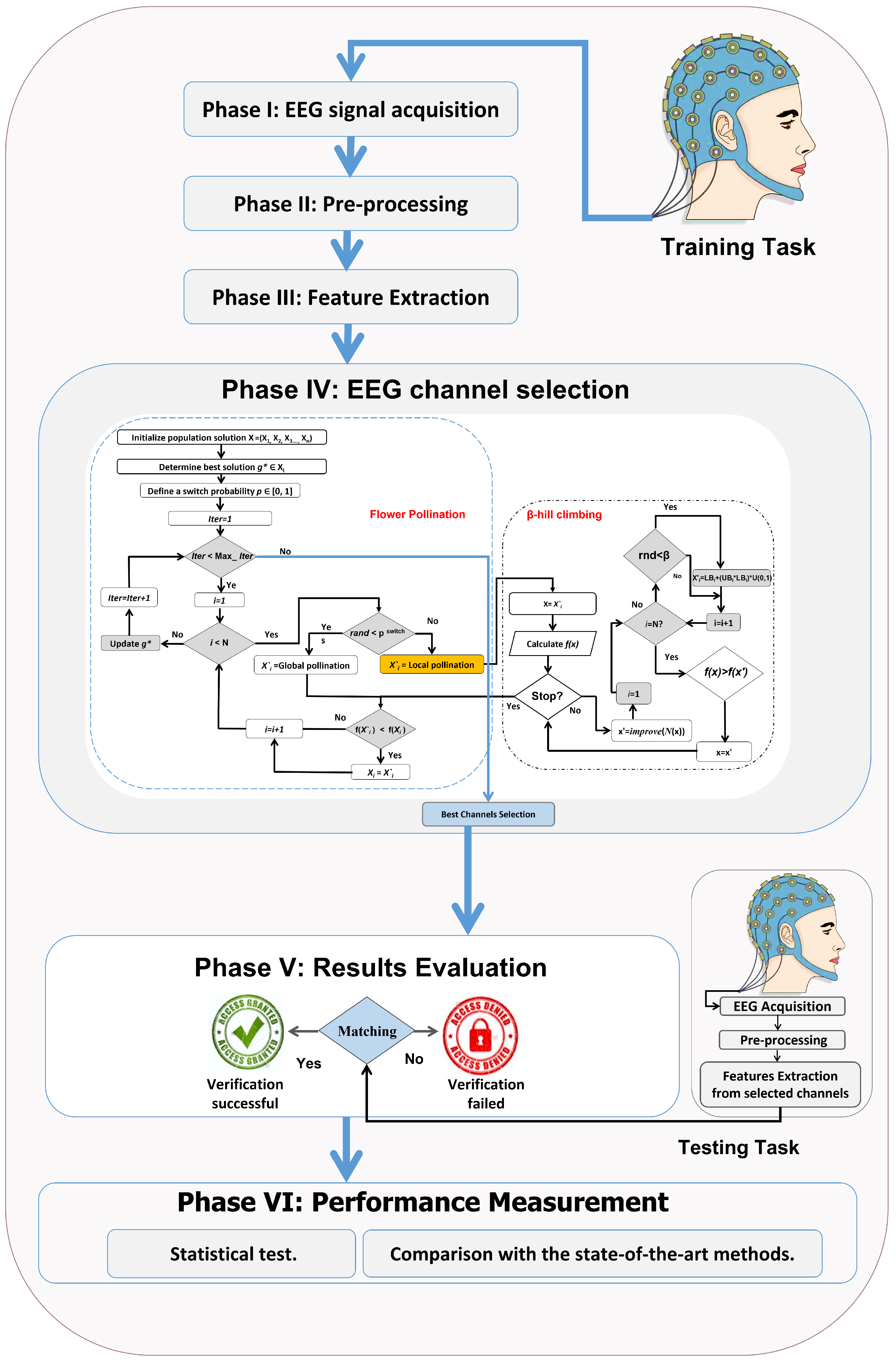
2022
Orawit Thinnukool
Signet Ring Cell (SRC) Carcinoma is among the dangerous types of cancers, and has a major contribution towards the death ratio caused by cancerous diseases. Detection and diagnosis of SRC carcinoma at earlier stages is a challenging, laborious, and costly task. Automatic detection of SRCs in a patient’s body through medical imaging by incorporating computing technologies is a hot topic of research.
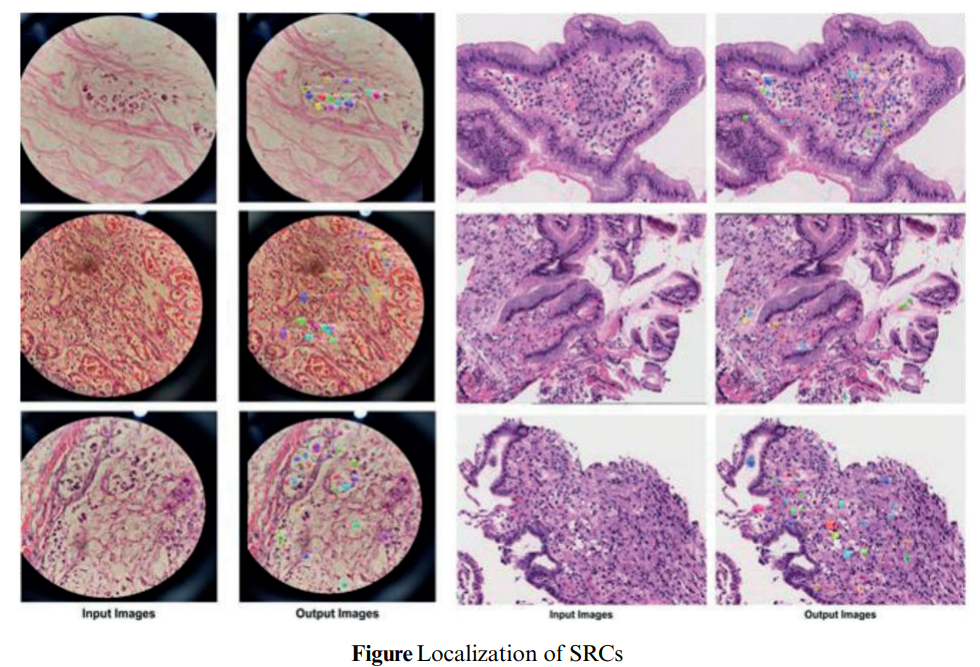
2022
Orawit Thinnukool
In this study, linguistic variables in terms of triangular fuzzy numbers (TrFn) are used to manage such kind of rough information, then the rough approximations of the fuzzy hypersoft set (FHS-set) are characterized which are capable of handling such informational uncertainties. The FHS-set is more flexible as well as consistent as it tackles the limitation of fuzzy soft sets regarding categorizing parameters into their related sub-classes having their sub-parametric values. Based on these rough approximations, an algorithm is proposed for the optimal selection of suppliers by managing experts’ opinions and rough information collectively in the form of TrFn-based linguistic variables. To have a discrete decision, a signed distance method is employed to transform the TrFn-based opinions of experts into fuzzy grades.
The proposed algorithm is corroborated with the help of a multi-criteria decision-making application to choose the best supplier for real estate builders. The beneficial facets of the put forward study are appraised through its structural comparison with few existing related approaches. The presented approach is consistent as it is capable to manage rough information and expert’s opinions about suppliers collectively by using rough approximations of FHS-set.
https://www.mdpi.com/2075-5309/12/7/940
2022
Orawit Thinnukool
The study proposes ReSVM, an approach combining deep features of ResNet-50 with the SVM classifier, for distraction detection of a driver. ReSVM is compared with six state-of-the-art approaches on four datasets, namely: State Farm Distracted Driver Detection, Boston University, DrivFace, and FT-UMT. Experiments demonstrate that ReSVM outperforms the existing approaches and achieves a classification accuracy as high as 95.5%. The study also compares ReSVM with its variants on the aforementioned datasets.
2022
Orawit Thinnukool
This research involves an evaluation of the performance of deep learning models for COVID-19 diagnosis using chest X-ray images from a dataset containing the largest number of COVID-19 images ever used in the literature, according to the best of the authors’ knowledge.
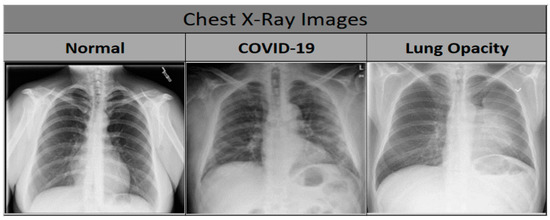
2022
Orawit Thinnukool
This research discusses machine learning algorithms, such as Gaussian Progress Regression (GPR), Support Vector Machine Regression (SVMR), Ensemble Learning (EL), and optimized GPR, SVMR, and EL, to predict the compressive strength of Lightweight Concrete (LWC). The simulation approaches of these trained models indicate that AI can provide accurate prediction models without undertaking extensive laboratory trials. Each model’s applicability and performance were rigorously reviewed and assessed. The findings revealed that the optimized GPR model (R = 0.9803) used in this study had the greatest accuracy. In addition, the optimized SVMR and GPR model showed good performance, with R-values 0.9777 and 0.9740, respectively. The proposed model is economic and efficient, and can be adopted by researchers and engineers to predict the compressive strength of LWC.
2022
Orawit Thinnukool
The proposed work presents a robotized predictive structure, dependent on machine learning (ML) methods for the forecast of AD. Neuropsychological measures (NM) and magnetic resonance imaging (MRI) biomarkers are deduced and passed on to a recurrent neural network (RNN). In the RNN, we have used long short-term memory (LSTM), and the proposed model will predict the biomarkers (feature vectors) of patients after 6, 12, 21 18, 24, and 36 months. These predicted biomarkers will go through fully connected neural network layers. The NN layers will then predict whether these RNN-predicted biomarkers belong to an AD patient or a patient with a mild cognitive impairment (MCI). The developed methodology has been tried on an openly available informational dataset (ADNI) and accomplished an accuracy of 88.24%, which is superior to the next-best available algorithms.
2022
Orawit Thinnukool
In this research, we proposed a deep learning and Moth-Crow optimization-based method for GI disease classification. There are a few key steps in the proposed framework. Initially, the contrast of the original images is increased, and three operations based on data augmentations are performed. Then, using transfer learning, two pre-trained deep learning models are fine-tuned and trained on GI disease images.
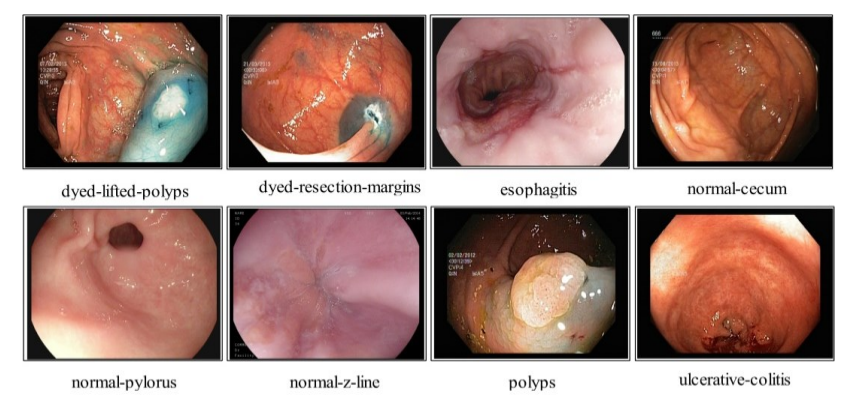
2022
Orawit Thinnukool
In computer vision, object recognition and image categorization have proven to be difficult challenges. They have, nevertheless, generated responses to a wide range of difficult issues from a variety of fields. Convolution Neural Networks (CNNs) have recently been identified as the most widely proposed deep learning (DL) algorithms in the literature. CNNs have unquestionably delivered cutting-edge achievements, particularly in the areas of image classification, speech recognition, and video processing. However, it has been noticed that the CNN-training assignment demands a large amount of data, which is in low supply, especially in the medical industry, and as a result, the training process takes longer. In this paper, we describe an attention-aware CNN architecture for classifying chest X-ray images to diagnose Pneumonia in order to address the aforementioned difficulties. Attention Modules provide attention-aware properties to the Attention Network. The attention-aware features of various modules alter as the layers become deeper. Using a bottom-up top-down feedforward structure, the feedforward and feedback attention processes are integrated into a single feedforward process inside each attention module.
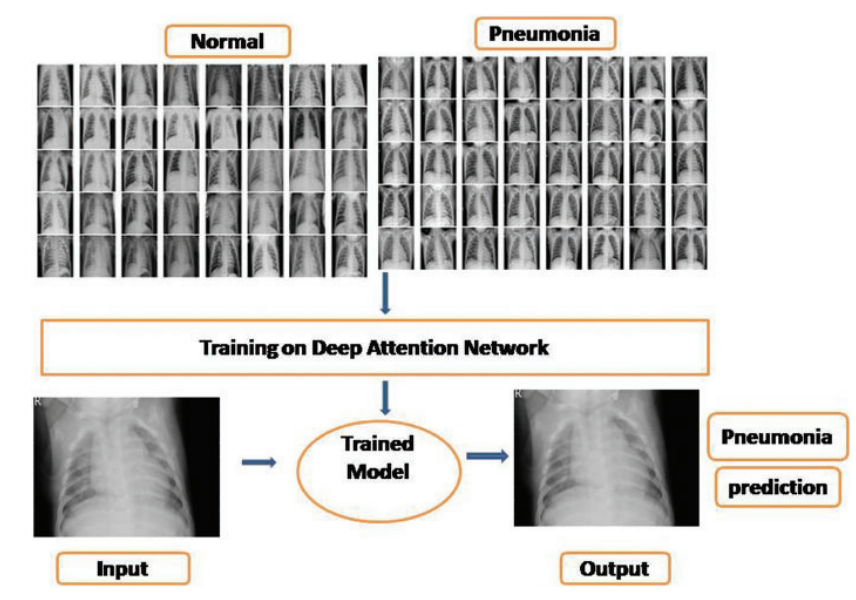
In the present work, a deep neural network (DNN) is combined with an attention mechanism to test the prediction of Pneumonia disease using chest X-ray pictures. To produce attention-aware features, the suggested network was built by merging channel and spatial attention modules in DNN architecture. With this network, we worked on a publicly available Kaggle chest X-ray dataset. Extensive testing was carried out to validate the suggested model. In the experimental results, we attained an accuracy of 95.47% and an F- score of 0.92, indicating that the suggested model outperformed against the baseline models.
2022
Orawit Thinnukool
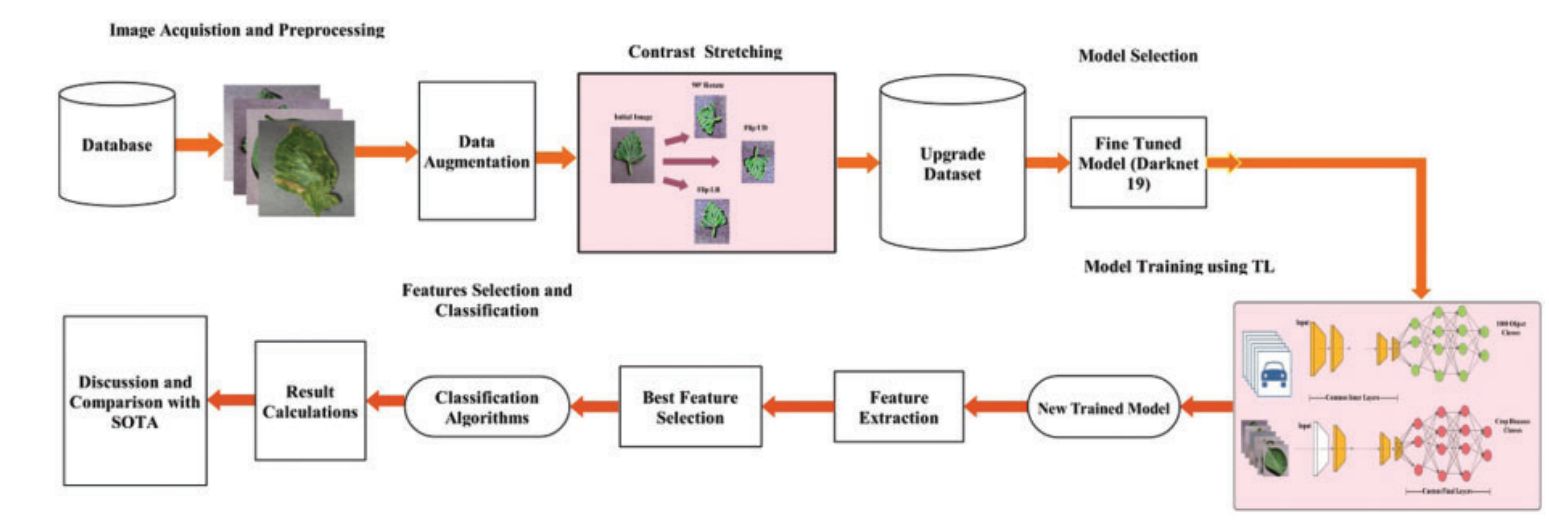
https://www.techscience.com/cmc/v74n1/49776
2022
Orawit Thinnukool
The proposed work aims to develop an automatic TB detection system to assist the pulmonologist in confirming the severity of the disease, decision-making, and treatment execution. The proposed system employs a pre-trained VGG19 with the following phases: (i) image pre-processing, (ii) mining of deep features, (iii) enhancing the X-ray images with chosen procedures and mining of the handcrafted features, (iv) feature optimization using Seagull-Algorithm and serial concatenation, and (v) binary classification and validation.
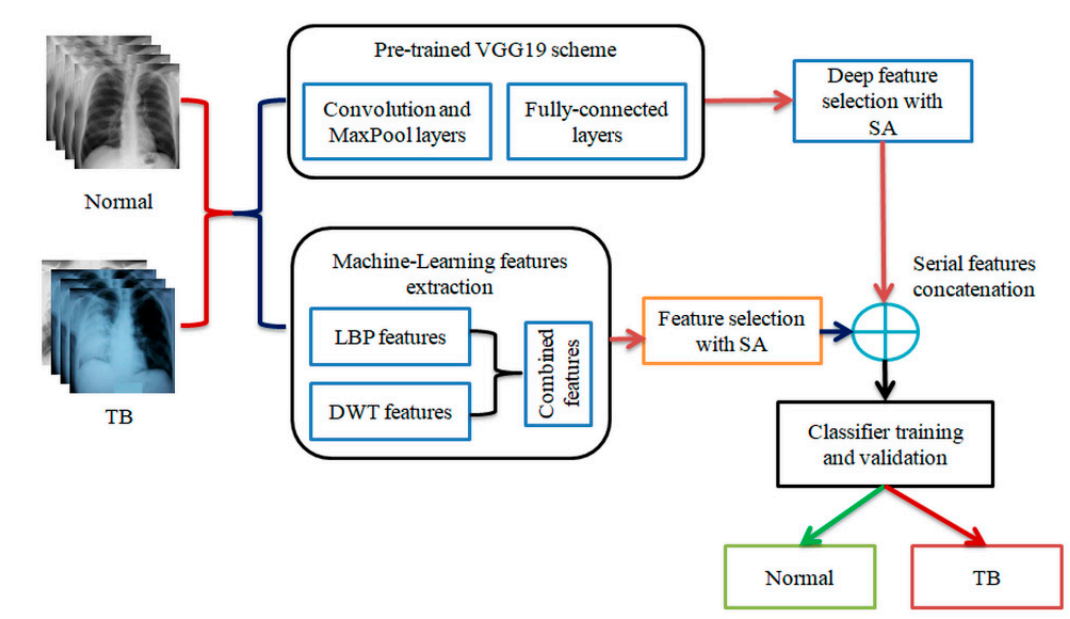
2021
Orawit Thinnukool
The brain tumor is a deadly disease that is caused by the abnormal growth of brain cells, which affects the human blood cells and nerves. Timely and precise detection of brain tumors is an important task to avoid complex and painful treatment procedures, as it can assist doctors in surgical planning. Manual brain tumor detection is a time-consuming activity and highly dependent on the availability of area experts.
Therefore, it is a need of the hour to design accurate automated systems for the detection and classification of various types of brain tumors. However, the exact localization and categorization of brain tumors is a challenging job due to extensive variations in their size, position, and structure. To deal with the challenges, we have presented a novel approach, namely, DenseNet-41-based CornerNet framework.
The proposed solution comprises three steps. Initially, we develop annotations to locate the exact region of interest. In the second step, a custom CornerNet with DenseNet-41 as a base network is introduced to extract the deep features from the suspected samples. In the last step, the one-stage detector CornerNet is employed to locate and classify several brain tumors. To evaluate the proposed method, we have utilized two databases, namely, the Figshare and Brain MRI datasets, and attained an average accuracy of 98.8% and 98.5%, respectively. Both qualitative and quantitative analysis show that our approach is more proficient and consistent with detecting and classifying various types of brain tumors than other latest technique . . https://www.mdpi.com/2075-4418/11/10/1856#
2021
Orawit Thinnukool
2021
Orawit Thinnukool
we propose a novel computerised approach in this work using deep learning and featuring an ant colony optimisation (ACO) based selection. The proposed method consists of four fundamental steps: data augmentation to solve the imbalanced dataset, fine-tuned pre-trained deep learning models (NasNet Mobile and MobileNet-V2), the fusion of extracted deep features using matrix length, and finally, a selection of the best features using a hybrid ACO and a Neighbourhood Component Analysis (NCA). The best-selected features were eventually passed to many classifiers for final recognition. The experimental process involved an augmented dataset and achieved an average accuracy of 99.7%. Comparison with existing techniques showed that the proposed method was effective.
2025
Orawit Thinnukool
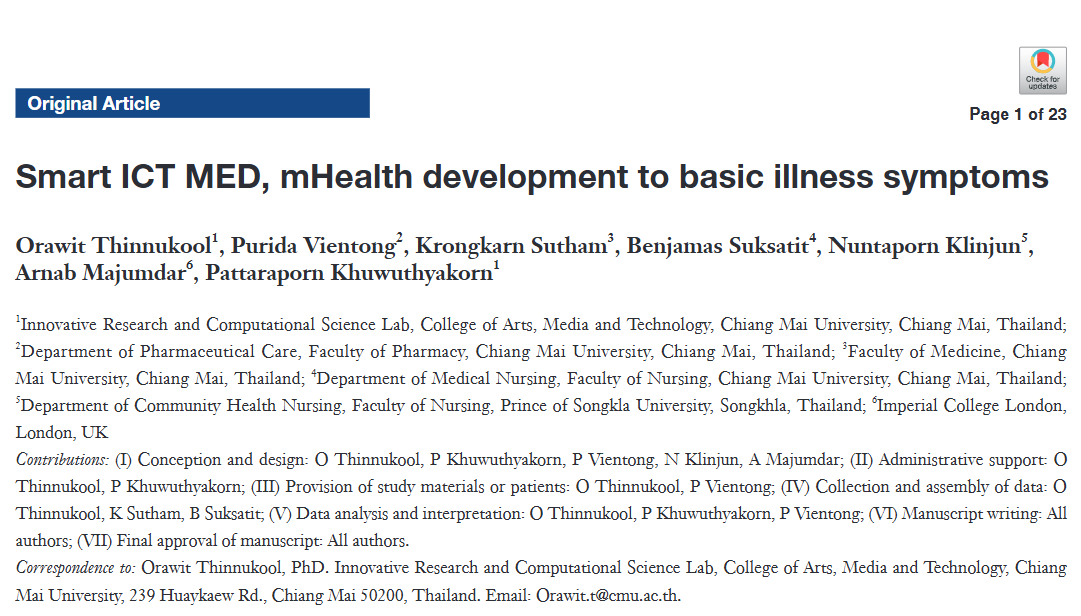
This study addresses challenges in public health, particularly in Thailand, where overcrowded medical services and limited health literacy hinder self-care. The researchers developed the Smart ICT MED app, a mobile health solution designed to empower users in managing basic health conditions. The app offers features like preliminary symptom assessment, self-monitoring, and locating nearby hospitals. It was developed using data from 54 symptom groups, medical handbooks, and expert insights to ensure accuracy and user-friendliness.

The app offers a reliable self-diagnosis tool for 54 disease groups, with a user-friendly interface and strong engagement. Its potential impact on public health is promising, but further improvements are needed, such as enhancing user engagement, integrating professional consultations, and overcoming publication hurdles for broader adoption.
Product link : https://innovativelab.camt.cmu.ac.th/resource
2022
Chalermpon Kongjit
A UCD was utilised to construct a process taxonomy to understand, analyse, design and develop an application suitable for Thai women. It was found from an evaluation of the currently-available women’s m-health applications that usability is their main weakness; therefore, this aspect needed to be prioritised in the new design.
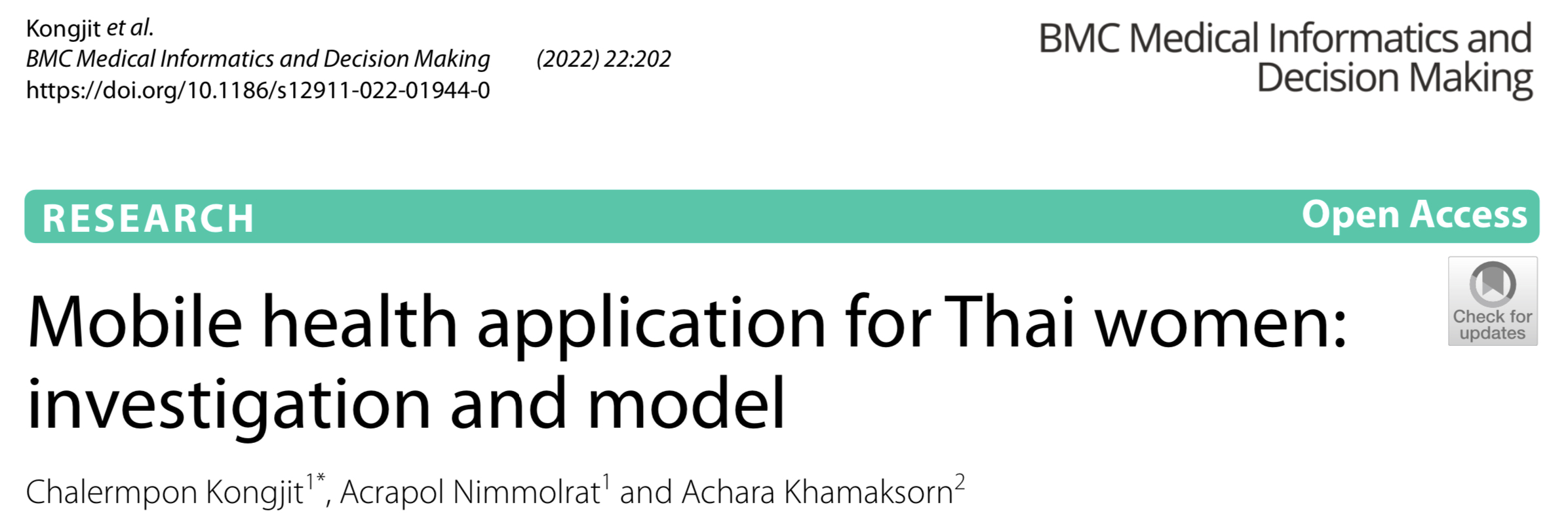
2022
Purida Vientong
This study aimed to determine the efficacy of a smartphone application named Quit with US among young adult smokers. An open-label, parallel, 2-group, randomized controlled trial with a 12-week follow-up was conducted between March and November 2020 among undergraduate students (18 to 24 years) in Chiang Mai Province, Thailand. A total of 273 participants were assigned by simple randomization procedure to the Quit with US intervention group (n = 137) or the control group (n = 136).
All participants received pharmacists’ smoking cessation counseling at baseline and follow-ups. In addition, the intervention group’s participants were advised to use Quit with US. The baseline and 12-week follow-up assessments were conducted at a study unit, whereas other follow-ups were completed over the telephone. The primary abstinence outcome was the exhaled CO concentration level (≤6 ppm) verified 7-day point prevalence abstinence. At baseline, the participants’ mean (standard deviation) age was 21.06 (1.62) years. Most identified as daily smokers (57.9%, n = 158), consumed ≤10 cigarettes daily (89.4%, n = 244), and expressed low level of nicotine dependence as measured by Heaviness of Smoking Index score (86.1%, n = 235). Regarding intention-to-treat analyses, participants in the Quit with US intervention group achieved significantly greater smoking abstinence rate than those in the control group (58.4% (80/137) vs. 30.9% (42/136), risk ratio = 1.89, 95% confidence intervals = 1.42 to 2.52, p < 0.001). In conclusion, Quit with US integrated with pharmacists’ smoking cessation counseling significantly enhanced smoking abstinence rates among young adult light smokers consuming ≤ 10 cigarettes daily.
2021
Acrapol Nimmolrat
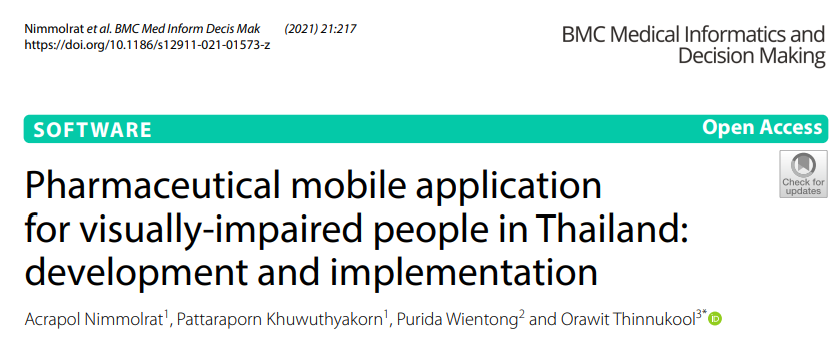
2021
Acrapol Nimmolrat
2020
Krongkarn Suthem
The triage application will be utilised to support the pre-hospital process and to classify patients’ conditions before they are admitted to the Emergency Department (ED). The application is suitable for users who are not medical emergency staff. Patients with non-trauma symptoms may be a suitable group to use the application in terms of time used to identify IDC for their own symptoms. The use of the application can be beneficial for those who wish to self-identify their symptoms before requesting medical services.
https://play.google.com/store/apps/details?id=th.ac.cmu.camt.triage&hl=th&gl=US
2025
Orawit Thinnukool
Intelligent transport systems (ITS) provide various cooperative edge cloud services for roadside vehicular applications. These applications offer additional diversity, including ticket validation across transport modes and vehicle and object detection to prevent road collisions. Offloading among cooperative edge and cloud networks plays a key role when these resources constrain devices (e.g., vehicles and mobile) to offload their workloads for execution. ITS used different machine learning and deep learning methods for decision automation. However, the self-autonomous decision-making processes of these techniques require significantly more time and higher accuracy for the aforementioned applications on the road-unit side. Thus, this paper presents the new offloading ITS for IoT vehicles in cooperative edge cloud networks. We present the augmented convolutional neural network (ACNN) that trains the workloads on different edge nodes. The ACNN allows users and machine learning methods to work together, making decisions for offloading and scheduling workload execution. This paper presents an augmented federated learning scheduling scheme (AFLSS). An algorithmic method called AFLSS comprises different sub-schemes that work together in the ITS paradigm for IoT applications in transportation. These sub-schemes include ACNN, offloading, scheduling, and security. Simulation results demonstrate that, in terms of accuracy and total time for the considered problem, the AFLSS outperforms all existing methods.
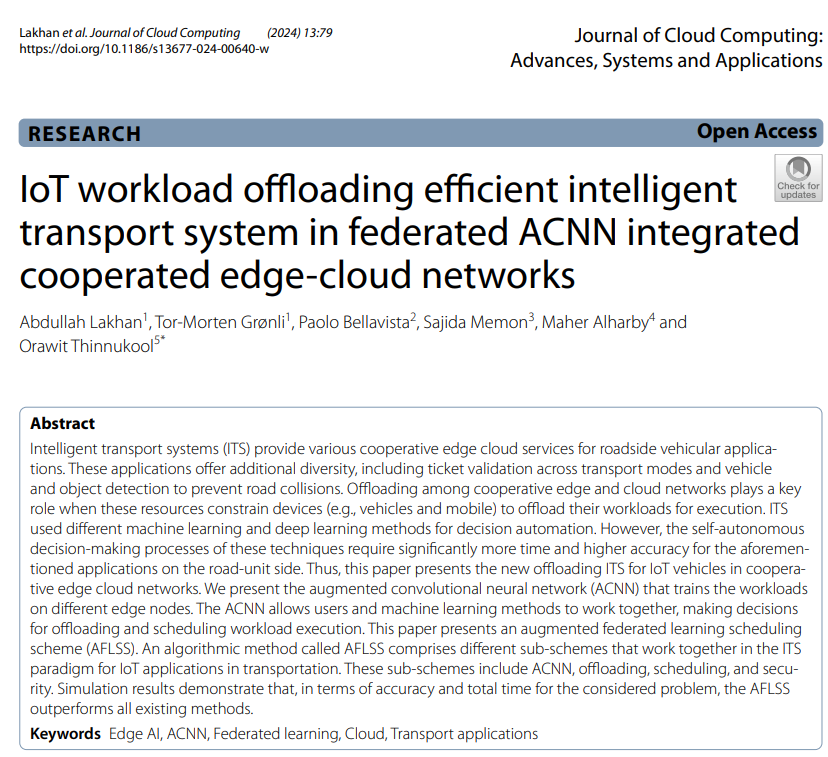
https://journalofcloudcomputing.springeropen.com/articles/10.1186/s13677-024-00640-w
2022
Pattarraporn Khuwuthyakorn
The usage of digital and intelligent healthcare applications on mobile devices has grown progressively. These applications are generally distributed and access remote healthcare services on the user’s applications from different hospital sources. These applications are designed based on client–server architecture and different paradigms such as socket, remote procedure call, and remote method invocation (RMI). However, these existing paradigms do not offer a security mechanism for healthcare applications in distributed mobile-fog-cloud networks.
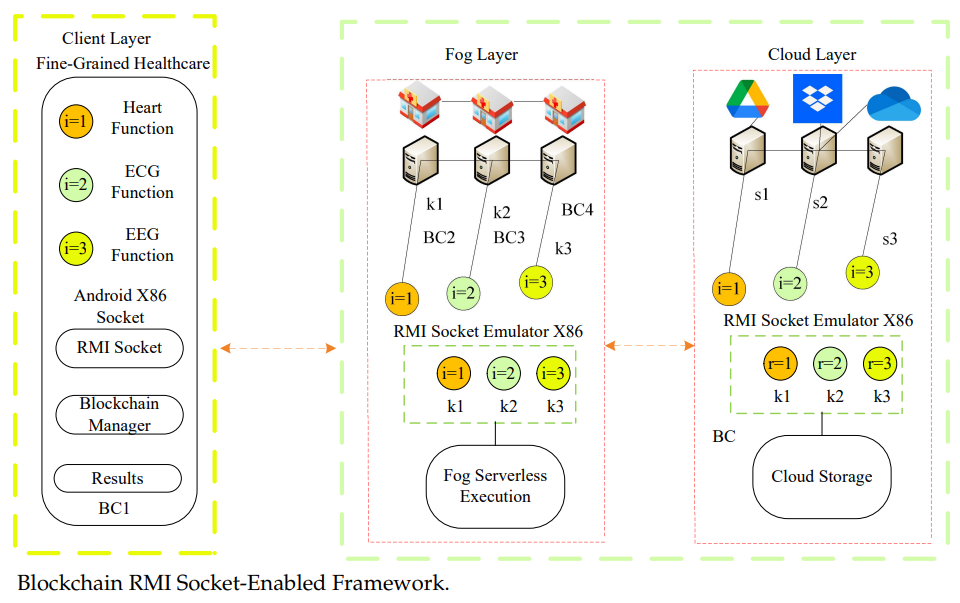
2022
Orawit Thinnukool
2022
Orawit Thinnukool
The purpose of the DERMA fusion technique is to analyze certain areas of interest in ECG peaks to identify the desired location, whereas FrlFT analyzes the ECG waveform using a time-frequency plane.
Furthermore, detected highest and lowest components of the ECG signal such as peaks, the time interval between the peaks, and other necessary parameters were utilized to develop an automatic model. In the last stage of the experiment, two supervised learning models, namely support vector machine and K-nearest neighbor, were trained to classify the cardiac condition from ECG signals. Moreover, two types of datasets were used in this experiment, specifically MIT-BIH Arrhythmia with 48 subjects and the newly disclosed Shaoxing and Ningbo People’s Hospital (SPNH) database, which contains over 10,000 patients. The performance of the experimental setup produced overwhelming results, which show around 99.99% accuracy, 99.96% sensitivity, and 99.9% specificity https://www.mdpi.com/2075-1729/12/6/842
2022
Orawit Thinnukool
Mobile-cloud-based healthcare applications are increasingly growing in practice. For instance, healthcare, transport, and shopping applications are designed on the basis of the mobile cloud. For executing mobile-cloud applications, offloading and scheduling are fundamental mechanisms. However, mobile healthcare workflow applications with these methods are widely ignored, demanding applications in various aspects for healthcare monitoring, live healthcare service, and biomedical firms. However, these offloading and scheduling schemes do not consider the workflow applications’ execution in their models.
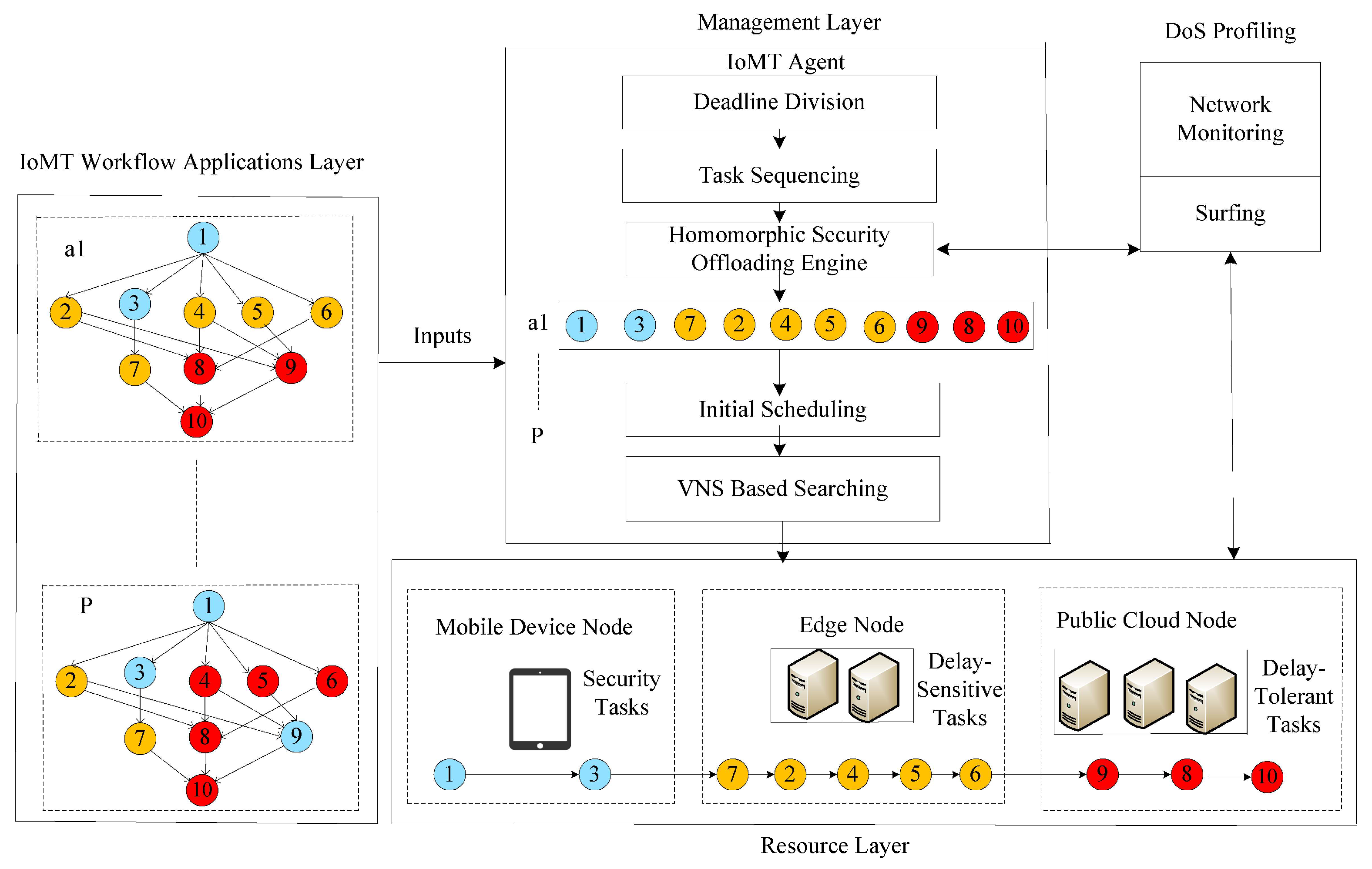
2022
Orawit Thinnukool
The research develops a new, cost-effective and stable IoMT framework based on a blockchain-enabled fog cloud. The study aims to reduce the cost of healthcare application services as they are processing in the system. The study devises an IoMT system based on different algorithm techniques, such as Blockchain-Enable Smart-Contract Cost-Efficient Scheduling Algorithm Framework (BECSAF) schemes. Smart-Contract Blockchain schemes ensure data consistency and validation with symmetric cryptography. However, due to the different workflow tasks scheduled on other nodes, the heterogeneous, earliest finish, time-based scheduling deals with execution under their deadlines. Simulation results show that the proposed algorithm schemes outperform all existing baseline approaches in terms of the implementation of applications.
2024
Achara Khameksorn
Chiang Mai (CNX), a popular city in northern Thailand, has attracted an increasing number of Chinese visitors to stay for a long term for diverse purposes, which facilitates local economic and cultural development. As social networks (SNs) are widely used to disseminate information and accelerate problem-solving, social recommendations (SRs) can be generated correspondingly to address the diverse and dynamic long-term residential demands of Chinese users in a multicultural context. This research aims to develop an SN-based recommendation framework for Chinese long-stayers in CNX to address the social recommendation problems for target long-stay users in a cross-cultural context.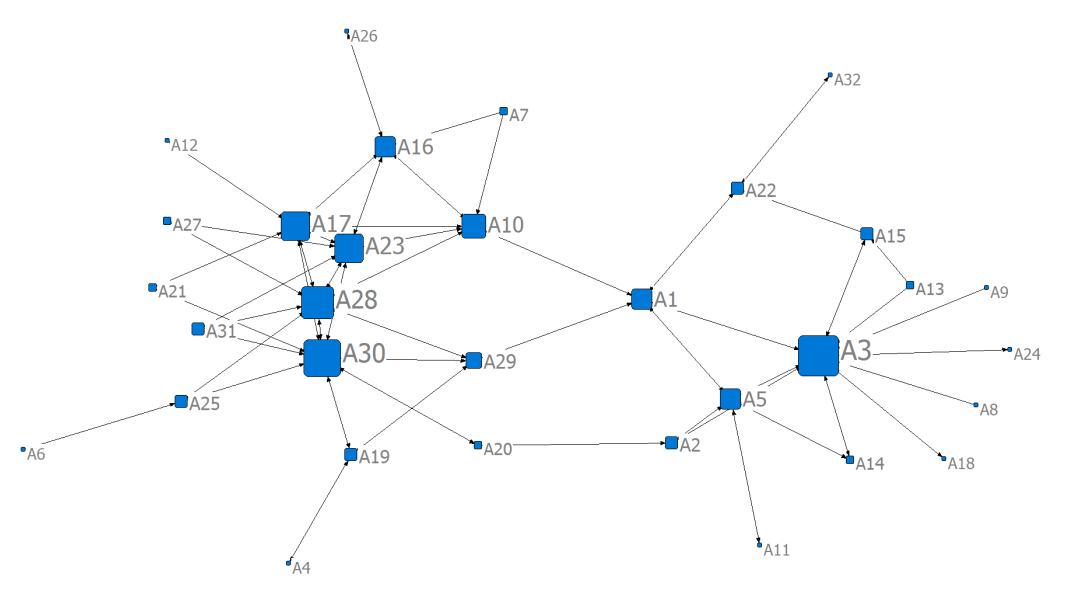
2023
Achara Khameksorn
Asset management (AM) focuses on the life cycle of assets and provides a systematic process for developing and maintaining an organisation’s assets using a set of assetrelated planning and control activities. Chiang Mai University (CMU) is a public university in Thailand founded in 1964. The university was the first provincial university in Thailand and aims to be the university of prototyped innovation for sustainable development in communities. CMU’s AM planning process is a critical aspect of its mission to develop the university. This study developed an asset management framework (AMF) based on IDEF0 functional modelling–a modelling process that facilitates the decisions, actions and activities of an organisation or system. Moreover, the study used an analytic hierarchy process (AHP) to perform pairwise comparison, produce matrices and calculate priorities for CMU’s assets. The researchers employed a strengths, weaknesses, opportunities and threats (SWOT) analysis to evaluate the organisation’s competitive position and support its strategic planning. This study presents the resulting of CMU’s AMF (AMF-CMU), the development of which contributed to prioritising and managing the university’s assets.
https://www.researchgate.net/profile/Achara-Khamaksorn/publication/379696501_2023_JCDC_IDEF0_Functional_Planning_Modelpdf/data/661639e6f7d3fc28743f97e4/2023-JCDC-IDEF0-Functional-Planning-Model.pdf
2021
Abdullah Lakhan
In this study, futuristic and emerging innovations are analyzed, improving COVID-19 effects for the general public. Large data sets need to be advanced so that extensive models related to deep analysis can be used to combat Coronavirus infection, which can be done by applying Artificial intelligence techniques such as Natural Language Processing (NLP), Machine Learning (ML), and Computer vision to varying processing files. This article aims to furnish variation sets of innovations that can be utilized to eliminate COVID-19 and serve as a resource for the coming generations. At last, elaboration associated with future state-of-the-art technologies and the attainable sectors of AI methodologies has been mentioned concerning the post-COVID-19 world to enable the different ideas for dealing with the pandemic-based difficulties.
2025
Orawit Thinnukool
The integration of digital technologies into tourism has opened innovative pathways to enhance visitor engagement, yet limited research explicitly examines the combined use of gamification and augmented reality (AR) in heritage contexts.
This study explores the effectiveness of a “play to earn” approach through the Lanna Passport mobile application designed for Chiang Mai Old Town, Thailand. Utilizing AR, gamified challenges, and reward-based incentives, the app guides visitors through 25 key cultural sites, encouraging physical activity and immersive exploration. Evaluations
demonstrate significantly increased engagement and satisfaction, particularly among younger demographics. Nonetheless, usability barriers for older users underscore the importance of designing intuitive interfaces. Results
emphasize AR and gamification’s potential to promote heritage appreciation and sustainability, offering insights for future application development targeted at diverse tourist groups.
CITATION
Thinnukool O, Phrommas R, Kongdee N,
Jintapitak M, Pitupumnak K, Jarumaneerat T
and Khuwuthyakorn P (2025) Sustainable
tourism promotion through mobile
gamification and reward systems for Chiang
Mai Old Town, Thailand.
Front. Comput. Sci. 7:1710089.
doi: 10.3389/fcomp.2025.1710089
2024
Orawit Thinnukool